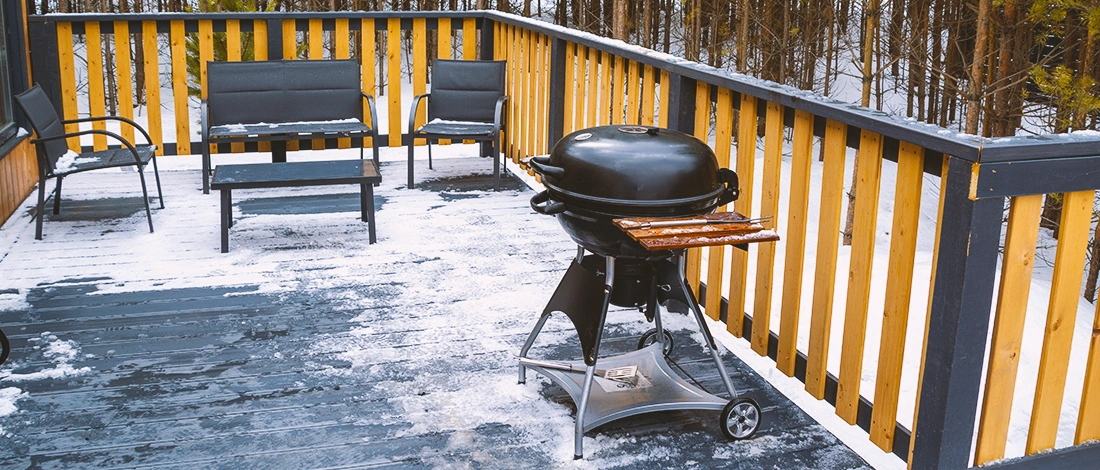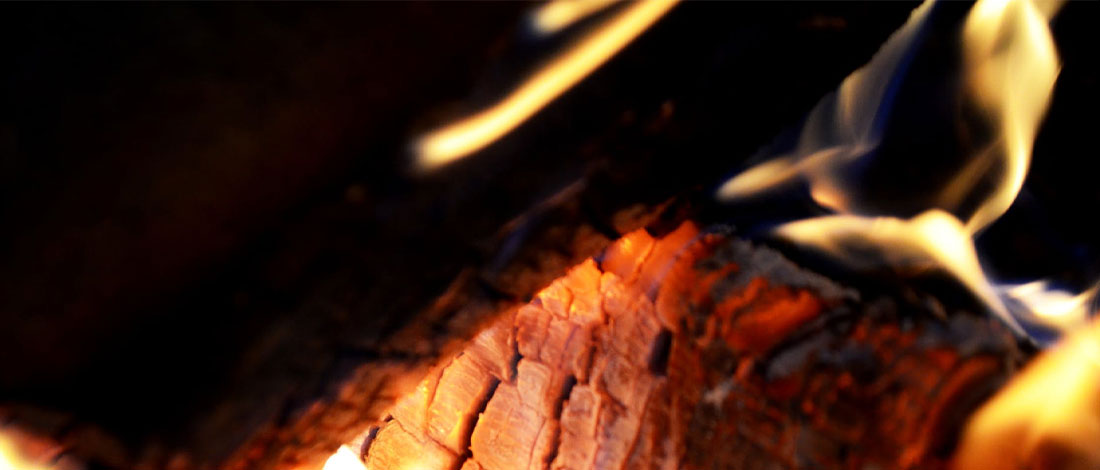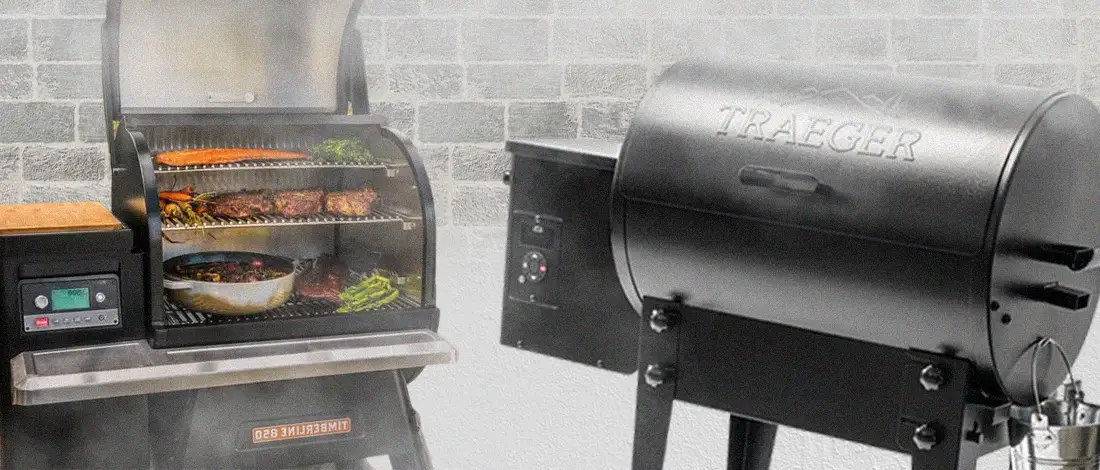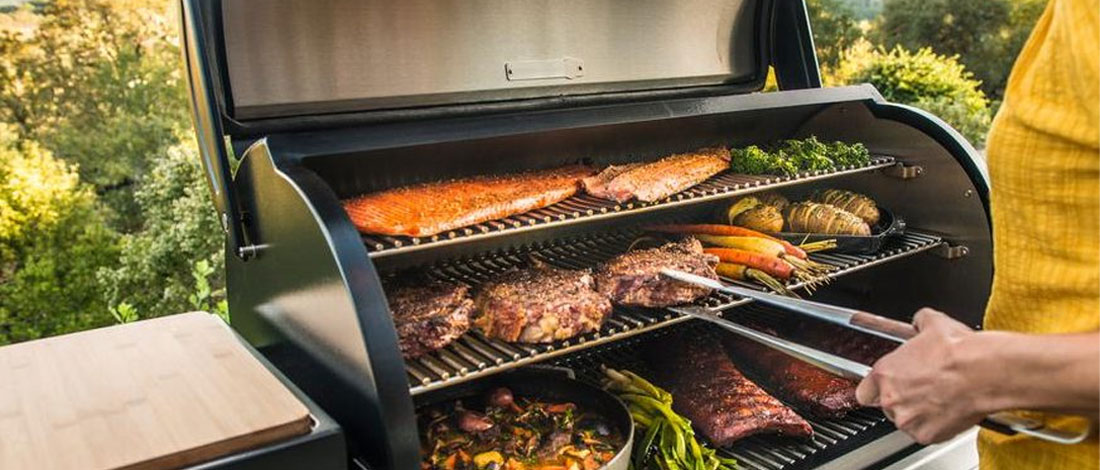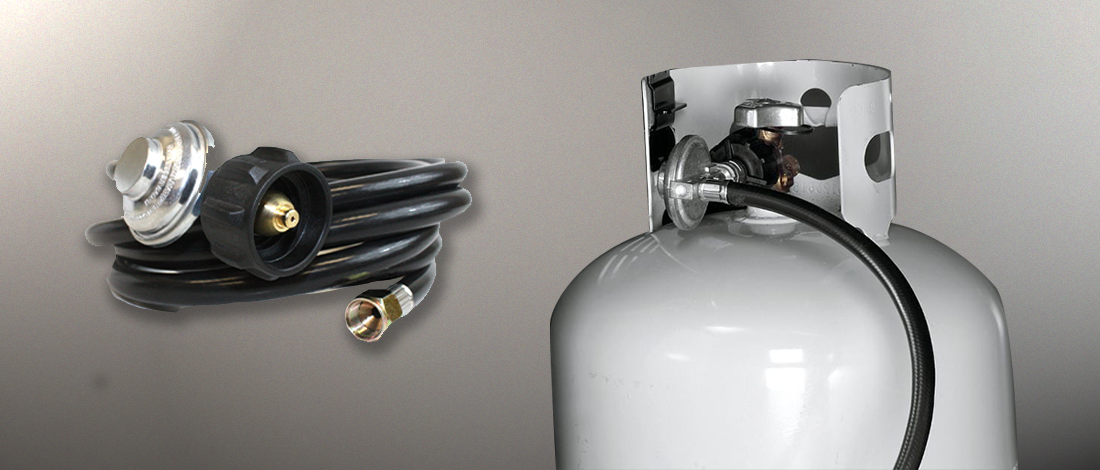A smoker works by allowing you to smoke low and slow and infuse your food with delicious flavor. But, using a smoker properly is no easy feat.
Ever since I became a carnivore diet devotee, I’ve tried all kinds of grills, with smokers being my favorite. Over the last ten years of smoking food, I’ve used charcoal smokers, gas smokers, pellet smokers, and more.
Today, I’ll talk you through the smoking process so you can avoid the mistakes I made and become an expert on how smokers work.
Quick Summary
- Using a smoker involves preparing the meat, setting up temperature probes, preparing the fuel, adjusting the vents, maintaining a steady temperature, adding wood chunks and water for moisture, and waiting for the meat to cook.
- There are several types of smokers you can choose from, such as an electric smoker, gas, pellet, vertical, and more.
- The ideal temperature for smoking is between 200ºF and 250ºF, and the fire should be built using a combination of charcoal and wood chunks.
- If you’re in the market for new glass grills or a wood smoker, check out our list of the 7 things to remember when buying the right smoker.
Things to Keep in Mind before Using Your Smoker

Smoking involves cooking at low heat. Wood chips or chunks create smoke as they smolder instead of burn. The wood gives the food a wood-infused smoky flavor.
A smoker grill needs a chamber for regulating the temperature. The chamber has to have a tight seal so that the smoke doesn’t escape through the smokestack.
“Smoking involves cooking food at lower temperatures over longer periods of time. This method works best for cooking large cuts of meat. A good rule of thumb is one to one and a half hours of smoking for each pound of meat.”
- Home Depot, YouTube Channel
Smokers can use indirect or direct heat. Direct heat means the heat source is right underneath the meat rack. Indirect heat uses a firebox, which is a box on the side of the smoker where the heat source is located.
You can also use a water smoker, where a water pan is inside the chamber. The heat and water create a humid environment and help maintain the temperature.
Step-By-Step Guide on How a Smoker Works
1. Prepare the Meat
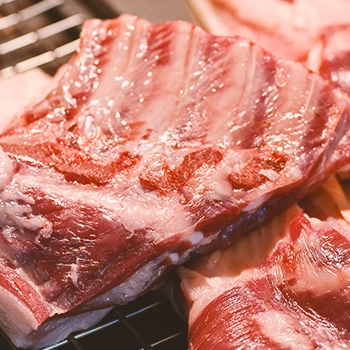
Before you actually start smoking, you should prepare your meat. For example, some meat has to be cured if you intend to cold smoke it.
Or, you can use a dry rub or a marinade. Even salt can change the meat flavor and help you brine the meat.
Preparing the meat right will bring your smoking to the next level and help you have better-tasting meat.
Pro tip: Keep your meat in the fridge, as cold meat can absorb the smoke better than meat kept at room temperature.
2. Set up Temperature Probes
Inadequate temperature can either dry out the meat or leave it undercooked. You want a stable temperature — ideally, 225 degrees and temperature probes can help you achieve this.
I used so many charcoal smokers, electric smokers, pellet smokers, and wood smokers, which had cheaply made temperature probes that showed inaccurate temperatures most of the time.
This happens because most temperature probes check the temperature at the top of the grill and not where the food actually is.
I recommend getting two digital air probes. These work as oven thermometers and can accurately track the temperature changes, which is especially important when you add fuel, adjust airflow, and as coals burn down.
You can attach one to the meat and use the second to read the chamber temperature.
Here’s what I did: I grilled a hole in the door at each end of the cooking chamber.
I wanted to get the probes as close to the food as possible and to be able to insert the probes without having to lift the lid.
3. Prepare Fuel

Once your meat is prepared and you’ve got the temperature probes ready, it’s time to prepare the fuel.
Preparing the fuel depends on what’s your smoker and what fuel you want to use:
- Electric smokers — Place them close to the power source and prepare wood chips.
- Propane smokers — These don’t require much fuel prep. Soak wood chips in advance, or use them dry. Make sure you have enough propane to finish cooking.
- Charcoal smokers — Light a full load of charcoal in a chimney starter. Wait about 15 minutes until it starts to turn to ash. You can use wood to add flavor to the meat.
Also Read: How Often to Add Wood to a Smoker?
4. Adjust the Vents
Smokers need oxygen to create heat and produce smoke, so controlling oxygen intake through the vents is important.
The majority of smoker grills have an intake baffle and a chimney baffle. Both should be fully open before adding the fuel to get maximum airflow.
The heat goes up through the top vent. You can adjust the intake baffle when the smoker grill heats it.
Place the wood chips into the firebox and wait until the temperature of an internal chamber is 225 degrees. Then add meat to the charcoal grill.
Pro tip: The smoker and firebox doors should be kept closed. If you open them, the temperature will fluctuate, and smoke can escape.
Once the temperature probe shows your smoker has reached the ideal temperature, you should add meat to it, close the door, and don’t open it again.
5. Keep the Temperature Steady
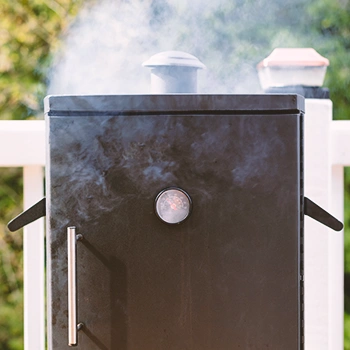
I mentioned that the ideal smoking temperature is 225 degrees, but you can keep the internal temperature between 200 to 270 degrees. Use air vents or dampers to control it.
For example, you can use the intake baffle for heat control because it also controls the oxygen flow to the coals.
You can add more airflow to the fire, which will increase the heat if needed. Open it to get the temperature up, then gradually adjust it.
Close it halfway or more until the temperature is stable at 225 to 250 degrees.
The chimney baffle controls the smoke. It lets heat escape and brings the temperature down.
If your temperature is falling below 200 degrees even though you adjusted the vents, you should add more fuel to the grill.
6. Add Wood Chunks
Now it’s time to add wood chips. You can use wood chips from fruitwoods, hardwoods, or nut woods for the best flavor. Generally, you won’t need more than a few wood chunks when smoking meat.
I like to use large wood chunks instead of chips, as they tend to smolder more consistently. Place them directly on the coals for charcoal smokers.
Don’t position the wood chunks directly on the hottest part of your outdoor cooking appliance.
You want them to add the flavor of the wood to the meat and not have ash cover your food.
You don’t have to soak the wood before placing it on the coals, as wood doesn’t absorb much water. Plus, the moisture from wood can dampen the burning coals.
Place the wood into wood pans above the fuel source on a gas grill or electric smoker, or set a pellet smoker to a wood-smoking setting.
7. Add Water for Moisture

Another thing you should do when cooking meat on a smoker is add moisture. Moisture helps the meat absorb the smoky flavor. You can add moisture by setting up a water pan.
Place a water pan above the wood section, or put a rack inside the firebox above the coals to humidify the smoke that goes in the cooking chamber.
Or, you can spritz water or apple juice over the meat. Do this in the later stages of smoking, once the meat starts to look dry.
8. Wait
Finally, it’s time to play the waiting game. You’ll have to wait several hours, even a whole day for large cuts of meat.
If you’re barbecuing, you want to get a tender, very moist texture and not medium-rare.
Chicken is generally done at 165 degrees, but the legs may need more time to be very tender. Collagen in chicken turns to gelatin at 180 degrees, which gives you a juicy cut and a soft texture.
The same goes for thicker meats such as pork shoulder, although you may want to go a little higher for them — up to 200 degrees.
Overall, you should cook by temperature and not time. Let the internal temperature of the meat tell you when smoking meat is done.
Different Kinds of Smokers

Here’s a breakdown of all the different kinds of smokers.
1. Vertical Water Smokers
Vertical smokers are among the most popular smokers, mostly because they are the least expensive.
Vertical smokers have three main parts:
- The heat source found at the bottom is usually charcoal, although it can be gas or an electric heating element.
- The water pan above the firebox. It stores and regulates the heat
- The smoking chamber where you place the meat.
Vertical smokers are usually small and don’t take up much space. A vertical smoker is compact, so it’s usually efficient and doesn’t need much fuel. However, they have limited temperature control, as some don’t have adjustable vents.
A propane smoker is a vertical smoker with a temperature gauge on the outside.
2. Offset Smokers
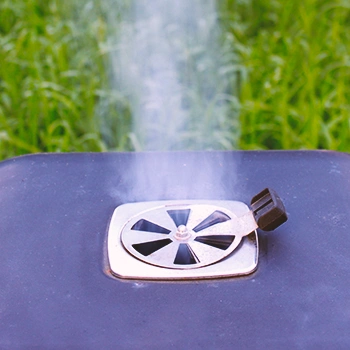
Offset smokers have two parts: the cooking area and the firebox. Offset smoker uses metal plates with either small, medium, or large holes on the surface.
The holes offset the direct heat and distribute it across the chamber during the smoking process.
Offset smokers can leak smoke through the doors and the connection between the cooking chamber and the firebox.
They also often have uneven heating. An inexpensive offset smoker is often made with a thin metal, which doesn’t retain heat well.
When buying an offset smoker, you should check that door and seams can seal tightly so the smoke doesn’t escape.
3. Drum Smokers
Drum smokers come fully assembled, or you can do it yourself. These smokers are among the simplest to use. They are lightweight, which makes them portable.
A drum smoker has a steel drum with a firebox at the bottom and a cooking rack at the top. There are vents on the base and the lid for temperature control. There’s no water pan, so you cook food via direct smoking.
These smokers are perfect for chicken and ribs, not so much for brisket and pork roast, as they tend to be dried out.
4. Kamado Grill
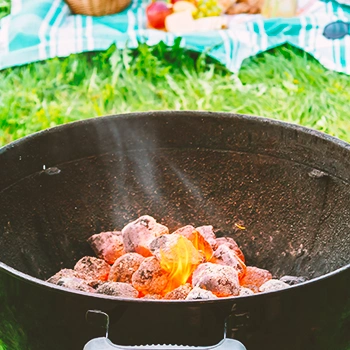
Kamado grills can maintain low cooking temperatures, so it’s perfect for low and slow smoking.
You need to block the direct heat source to use Kamado grills for smoking meats. You can use a plate setter that blocks the heat of the charcoal so that you can cook indirectly.
Adjust the vents to have a stable desired temperature, and you’re ready for slow cooking.
A disadvantage of Kamado grills is their price — they are more expensive compared to other types of smokers. However, if you plant smoke meat often, it’s worth it.
5. Box Smoker
A box smoker is designed as a vertical smoker, but it’s a rectangular shape. It looks like an oven with a heat source underneath.
Insulation is crucial for box smokers. Some of these smokers, especially inexpensive ones, have bad insulation, are made of thin metal, and have a door that doesn’t fit.
Good quality box smoker costs more, but this BBQ smoker is dependable and easy to use among different types of smokers.
6. Smoker Ovens
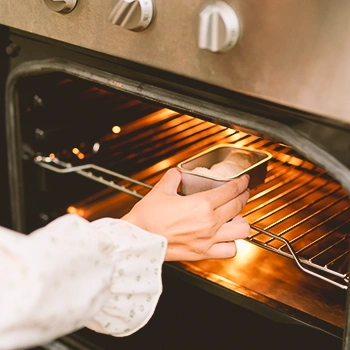
Smoker ovens work just like a household oven. However, they have controls that let you smoke a brisket while you’re away.
A smoker oven has an insulated box with an electric heating element at the bottom, which makes wood chips in the pan smolder.
Direct radiant heat is blocked by a piece of metal that collects drippings, so there’s no fire outbreak.
Overall, among all types of smokers I mentioned, this one is a good combination of technology and barbecue, and it’s a good solution if you want to smoke but don’t want to put a lot of work into cooking meat.
7. Pellet Grills
A pellet smoker is very similar to an offset smoker but doesn't use charcoal or chopped wood but wood pellets.
They have a hopper, which is a storage bin that you fill with wood pellets. An auger draws in the pellets from the hopper into a firepit, where they burn and create smoke.
Some pellet grills are more technologically advanced, and you can set a specific cooking temperature. Others require you to use meat probes to check the temperature.
Their main disadvantage is the high price. Also, as they have a lot of moving parts, failures can happen, and repairs can be expensive.
8. Charcoal Smoker
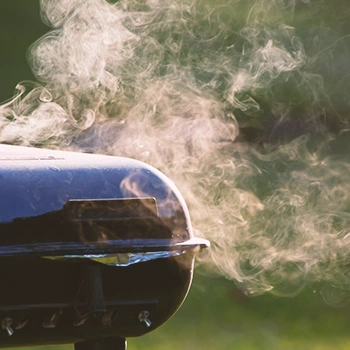
The last of the BBQ smokers are the charcoal smoker. Out of all the types of smokers on this list, the charcoal smoker is most commonly used for smoking meat.
These smokers can be drum or bullet style. Bullet smokers are inexpensive and can be used for both BBQ smoking and grilling. It has two grill grates, water, and a fuel pan to generate moisture, so the smoke flows in the domed top.
You don’t need to watch over these when cooking food. Just adjust the dampers that control the airflow, toss in wood chips, and you’re done.
Related Articles:
Smoking vs. Barbecuing vs. Grilling
Here are the main differences between smoking, barbecuing, and grilling.
1. Smoking
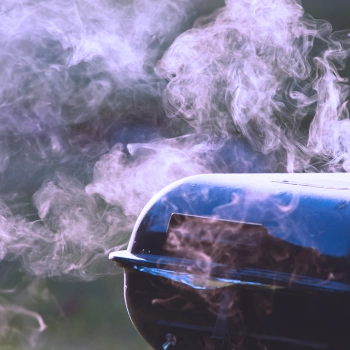
When you smoke meat, meat isn’t in direct contact with the flame. Instead, there’s a separate area in the smoking chamber where the fuel is located.
The heat and smoke enter the chamber, surrounding the meat and leaving through a vent at the top of the smoker.
The smoker lid is always closed when smoking meat, and smoking can take from a couple of hours to days, depending on your smoking method and meat.
Some food can be cold smoked, such as:
- Chicken breasts
- Salmon
- Steak
- Pork chops
- Beef
The ideal cold smoking temperature is between 68 and 86 degrees, and it must be under 110 degrees [1]. Also, these foods have to be cured before placing them in the BBQ smoker.
Other food should be hot smoked:
- Ham
- Ribs
- Brisket
- Pulled pork
Hot smoker temperature is between 165 and 185 degrees [2].
Also Read: How to Smoke Meats Without a Smoker?
2. Barbecuing
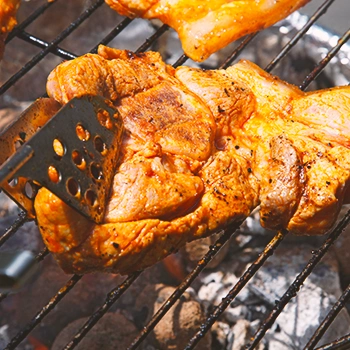
Barbecuing is similar to smoking. It’s also fueled by wood or charcoal, and the top has to be down so the meat is in the heat.
Also, the meat doesn’t come in direct contact with the heat, but it’s put high above or to the side of the flame.
The temperature should be between 190 and 350 degrees.
Barbecuing is much faster than smoking — it can take as little as half an hour to a few hours, depending on the food you’re barbecuing.
3. Grilling
Grilling is different from smoking and barbecuing. This is when the meat is in direct contact with the flame, so you get the charred exterior and juices inside are sealed in.
Grilling is best for thin meat cuts or vegetables, mostly because this is done over a short period, so thick cuts of meat could be undercooked.
You can’t step away while grilling food, which you can do while smoking. You need to keep an eye on food while grilling; otherwise, it’ll be burned or undercooked.
Foods that are good for grilling are:
- Ribs
- Chicken
- Pork chops
- Beef loin strip steak
- Porterhouse steak
FAQs
Is Smoked Meat Healthy?
Yes, smoked meat is healthy. It has high iron content, and you can cook food with heat and smoke. There’s no need to use oils, fats, or sauces.
However, if consumed in great amounts over long periods, smoked meat (and smoked food in general) may have potential health risks [3].
Are Smokers Worth It?
Yes, smokers are worth it. You can choose between several types of smokers according to your needs and preferences, from pellet to gas smokers. BBQ smokers work to give you juicy meat infused with smoke flavors.
References:
- https://www.oklahomajoes.com/how-tos/cold-smoke
- https://buythermopro.com/knowledge/hot-smoking-vs-cold-smoking/
- https://www.sciencedirect.com/topics/agricultural-and-biological-sciences/smoked-foods


